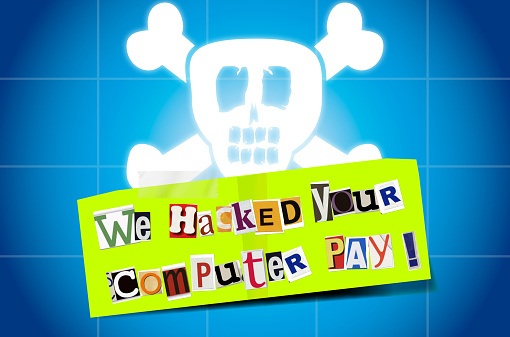
Ransomware is the new cybersecurity threat that is expected to continue to expand in 2016. Hackers will continue using ransomware, a malicious software that gives a hacker access and control over an individual or company’s computers, to wreak havoc in the hopes of receiving payment. This prediction arrives on the heels of a recent cybersecurity research report, which showed that more than 4 million samples of ransomware were active in the second quarter of 2015. As a result of the increased threat and to protect valuable assets, business owners and employees must become better educated about ransomware.

What Does Ransomware Do?
It is important to note that ransomware exists in a variety of forms; however, all forms of ransomware will keep you from using your computer in a normal capacity. Ransomware can be used to target servers, home computers, and even endpoints within an enterprise network. Typically Ransomware will encrypt files so that you can’t use them, prevent you from accessing vital business data, or stop certain applications from running. As the name suggests, ransomware is used by hackers to demand that you pay money, i.e. a ransom, to once more gain access to your computer, files, or data.
What Do Businesses And Professionals Need To Know?
One of the most important things that businesses and industry professionals need to know is that the number of enterprise ransomware victims is increasing. With each attack the top hacking groups (and individuals) are becoming more targeted in their approach. Attackers are taking the time needed to specifically research an enterprise victim. Once the research is completed, the attacker will use either a single-prong or multi-prong approach to gain access to the desired network. As soon as access is gained, the attacker will then use ransomware to target and encrypt certain file extensions or folders. Large sums of money will then be demanded from the enterprise.
There are a few key points to note about ransomware enterprise attacks:
- The attacker typically has a list of the file extensions that they are going to encrypt. These files tend to be essential to business operations.
- Reverse-engineering the encryption (“cracking”) the files, is virtually impossible without the original encryption key. The attackers are the only people who will have the original encryption key.
- Unintentional human error due to a lack of cybersecurity education is one of the top reasons that hackers are able to infiltrate a network or computer.
What Precautions Can Businesses Take?
Ransomware can work its way into a computer, server, or network from practically any source. Popular modes of entry include:
- Unsafe, un-validated, or fake websites.
- Emails and email attachments that employees open from unknown recipients.
- Clicking on malicious links that are embedded within social media posts, instant messenger chats, or emails.
One of the best tactics to avoid ransomware attacks is to ensure that your employees are educated about the potential dangers. From teaching employees to never click on a suspicious embedded link to showing employees how to spot fake emails or webpages, education is paramount to protecting your business and data assets. In addition to employee education, company-sensitive, confidential, and important files should be securely backed up in an unconnected and secure storage facility. By taking the latter precaution you can mitigate the bargaining power of a hacker using ransomware.
Ransomware can be used by domestic and international hackers at any point in time, unless businesses take the steps needed to protect their vital data and computer systems. Education, secure data storage, and working with a top cybersecurity company can help businesses to avoid the costly repercussions of a ransomware attack. Natural Networks is the trusted choice when it comes to staying ahead of the latest information technology tips, tricks, and news. Contact us at 619-222-3232 or send us an email at sales@naturalnetworks.com for more information.



